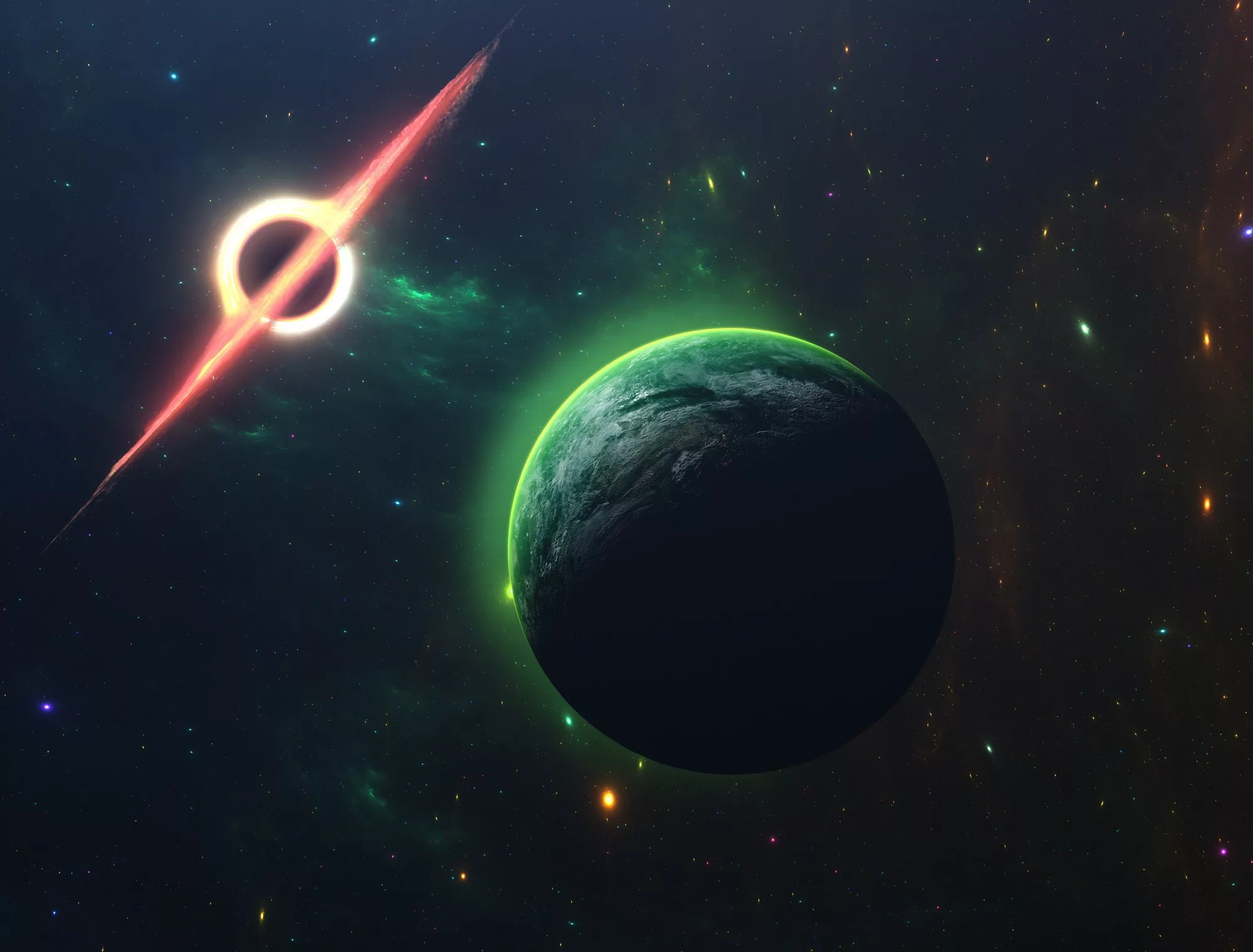Black holes have captivated the human imagination for decades, representing one of the most enigmatic and extreme phenomena in the universe. These cosmic objects, formed from the collapse of massive stars, bend space and time to their limits and hide their interiors behind a boundary known as the event horizon. With gravity so powerful that not even light can escape, black holes remain inaccessible to direct observation, leaving scientists to rely on theoretical physics and indirect measurements to unravel their secrets.
The question of what lies inside a black hole has profound implications for our understanding of the universe. Are they gateways to other dimensions, prisons for matter and energy, or something even stranger? To explore these possibilities, we must delve into the fundamentals of black hole formation, the physics that govern them, and the cutting-edge theories that attempt to decode their mysteries. In this article, we will expand upon the science of black holes, consider the philosophical and practical challenges of studying them, and ponder whether humanity will ever unlock the secrets of what lies within.
What Are Black Holes?
1. How Black Holes Are Formed
Black holes are formed through the process of gravitational collapse, which occurs when a massive star runs out of nuclear fuel. Without the outward pressure generated by nuclear fusion to counteract the force of gravity, the star’s core collapses under its own weight. Depending on the star’s mass, the collapse can result in the formation of a black hole, where all the matter is compressed into an infinitesimally small point known as a singularity.
This collapse is often accompanied by a supernova, a cataclysmic explosion that ejects the outer layers of the star into space. The core that remains becomes a black hole if its mass exceeds a critical threshold, beyond which no known force can stop the gravitational collapse. The process leaves behind a region of spacetime so distorted that nothing, not even light, can escape from it.
2. The Different Types of Black Holes
Not all black holes are the same. They vary in size, mass, and origin, and are generally categorized into the following types:
- Stellar Black Holes: These are the most common type, formed from the collapse of massive stars. Their masses typically range from a few to dozens of times the mass of the Sun.
- Supermassive Black Holes: Found at the centers of galaxies, these giants have masses millions or billions of times that of the Sun. Their origins remain a topic of active research, with theories suggesting they may grow by accreting matter over billions of years or by merging with other black holes.
- Intermediate-Mass Black Holes: These are a hypothesized class of black holes with masses between stellar and supermassive black holes. Evidence for their existence is growing, but they remain elusive.
- Primordial Black Holes: These hypothetical black holes are thought to have formed shortly after the Big Bang due to density fluctuations in the early universe. If they exist, they could provide insights into the origins of the cosmos.
Each type of black hole presents unique challenges and opportunities for scientific study, offering different clues about the nature of the universe.
The Event Horizon: Where the Known Ends
1. The Boundary of No Return
The event horizon is the defining feature of a black hole. It is the point at which the escape velocity exceeds the speed of light, meaning that nothing—no matter or information—can escape from within. To an external observer, objects approaching the event horizon appear to slow down and fade away, a phenomenon caused by gravitational time dilation.
Once an object crosses the event horizon, it is completely cut off from the outside universe. For the object itself, crossing this boundary might not feel dramatic, but its fate is sealed: it will inevitably be drawn toward the singularity at the black hole’s center.
2. The Photon Sphere
Just outside the event horizon lies the photon sphere, a region where gravity is strong enough to force light into circular orbits around the black hole. While photons in this region can theoretically orbit the black hole indefinitely, their orbits are unstable, and any slight perturbation will either send them spiraling into the black hole or escaping into space.
The photon sphere plays a crucial role in our ability to observe black holes indirectly. The “shadow” of a black hole, as captured by the Event Horizon Telescope in 2019, is created by the bending and absorption of light in this region. These observations provide valuable data about the size and shape of the event horizon, offering a glimpse into the extreme conditions near a black hole.
The Singularity: The Heart of the Mystery
1. What Is the Singularity?
At the center of a black hole lies the singularity, a point where the density of matter becomes infinite and the curvature of spacetime is infinitely sharp. According to Einstein’s general theory of relativity, the laws of physics as we know them break down at the singularity. Concepts like space, time, and causality lose their conventional meaning, creating an environment that defies comprehension.
Physicists have long debated the nature of singularities. Are they truly physical entities, or are they mathematical artifacts indicating the limits of our current theories? Resolving this question requires a deeper understanding of quantum gravity, the theoretical framework that unites general relativity with quantum mechanics.
2. Quantum Gravity and the Search for Answers
One of the major challenges in understanding singularities is the incompatibility between general relativity, which describes gravity on large scales, and quantum mechanics, which governs the behavior of particles at the smallest scales. A theory of quantum gravity could bridge this gap, offering new insights into the nature of black holes.
Theoretical approaches like string theory and loop quantum gravity propose that spacetime itself may have a discrete structure, preventing the formation of true singularities. Instead, the singularity might be replaced by a quantum object or a region of extreme but finite density. These ideas remain speculative but represent promising avenues for future research.
Theories About the Interior of Black Holes
1. Wormholes and Multiverses
One of the most intriguing theories about black holes is that they could serve as gateways to other regions of the universe or even to entirely separate universes. This idea is based on solutions to Einstein’s equations known as wormholes, or Einstein-Rosen bridges, which connect two points in spacetime. In theory, a black hole could be one end of a wormhole, with the other end opening into a different location or dimension.
While the concept of wormholes is popular in science fiction, their existence has yet to be proven. Additionally, the extreme gravitational forces near a black hole would likely destroy any matter attempting to pass through, making them impractical for travel. Nonetheless, the idea continues to inspire both scientific and imaginative exploration.
2. The Holographic Principle
Another groundbreaking idea is the holographic principle, which suggests that all the information about the contents of a black hole is encoded on its event horizon. In this view, the interior of a black hole may not exist as a physical volume but rather as a two-dimensional surface that encodes three-dimensional information.
If true, the holographic principle could revolutionize our understanding of black holes and the nature of reality itself. It suggests that spacetime and matter are emergent phenomena, arising from deeper, more fundamental principles.
Will We Ever Know What’s Inside a Black Hole?
1. Observational Limitations
The very nature of black holes makes direct observation of their interiors impossible. Once information crosses the event horizon, it is effectively lost to the outside universe. This creates a “cosmic censorship” that shields the singularity from view, leaving scientists to rely on indirect evidence and theoretical models.
Advances in technology, such as gravitational wave detectors and high-resolution telescopes, have expanded our ability to study black holes. However, these tools can only reveal information about the regions outside the event horizon, leaving the interior shrouded in mystery.
2. Theoretical Insights and Future Discoveries
While direct observation may be impossible, theoretical physics offers a powerful tool for probing the nature of black holes. By refining our understanding of quantum mechanics, gravity, and spacetime, we may develop models that accurately describe the conditions inside a black hole.
Future discoveries in quantum gravity, along with advancements in computational modeling and simulations, could provide new insights into the behavior of matter and energy in these extreme environments. These breakthroughs may not only answer the question of what’s inside a black hole but also reshape our understanding of the universe as a whole.
Conclusion
Black holes represent the ultimate frontier of scientific exploration, challenging our understanding of physics and pushing the boundaries of human knowledge. While the interior of a black hole remains inaccessible to direct observation, ongoing research continues to shed light on their properties and behavior. From the singularity at their core to the event horizon that defines their boundary, black holes are both a source of fascination and a gateway to new discoveries.
As we develop more advanced tools and theories, we may one day uncover the secrets hidden within these cosmic enigmas. Whether through the lens of quantum gravity, the holographic principle, or entirely new paradigms, the quest to understand black holes will remain one of the most exciting and profound pursuits in science.




